News for — and about — members of the Thompson Region Division of Family Practice.
Putting quality improvement into practice doesn’t need to be daunting
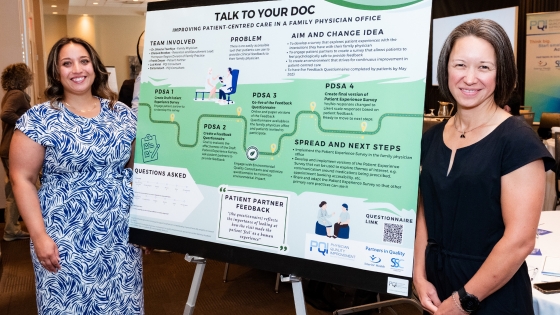
- Partner up for the Physician Quality Improvement program
-
It’s one thing for a family doctor to want to improve the quality of care, but tackling change in a busy family practice can seem burdensome. Fresh off a one-year Physician Quality Improvement project, Dr. Shauna Tsuchiya remarked how manageable — and rejuvenating — the process has been.
“I really recommend it,” Dr. Tsuchiya says. “It helps with burnout. And I tell people this all the time, I think when you can be part of change then that prevents me from burning out, because I can be part of the solution, and I have the tools to be part of the solution.”
The Physician Quality Improvement initiative (PQI) is a program of the Specialist Services Committee, a partnership of Doctors of BC and the BC government, that works in collaboration with health authorities across the province. PQI provides hands-on training and learning projects to help physicians with quality improvements in health care.
Dr. Shauna Tsuchiya, who shares a community primary care practice in Kamloops, worked in a dyad, which sees a physician pair with an administrative partner for their projects. Dr. Tsuchiya reached out to the Thompson Region Division of Family Practice since her project intended to focus on her community practice, and was paired with Chelsea Brookes, Member Integration Lead. Chelsea was the first non-Interior Health partner in the program, which up to that point had focused on hospital-based participants.
Over the course of a year, Chelsea and Dr. Tsuchiya worked together through two in-person training sessions and several virtual sessions. The goal: To develop a customized patient-experience questionnaire for Dr. Tsuchiya’s patients to provide actionable feedback.
Dr. Tsuchiya says that developing a project charter at the outset of the PQI work was important to establishing guidelines in the dyad for addressing communication styles, conflict resolution, scheduling, and decision-making.
“I think it’s an amazing opportunity to work in a dyad partnership,” she says. “You know how you work, and how decisions are made in your world, but that doesn’t necessarily mean that’s how it happens in the other areas of health care. You really learn how you can help each other.”
“To embed a project in an organization requires buy-in,” Brookes says. “People work to their skills. For example, I was able to work on the survey and poster, and Shauna could focus on the clinical aspect.”
The pair also worked with an out-of-town patient partner (who is not a patient with Dr. Tsuchiya’s clinic) to give the perspective of patients.
“We developed a patient-experience survey,” Brookes says. “For example, we asked ‘Do patients feel safe? Do they feel respected? Do they feel heard?’ Things like that. We had a lot of a-ha moments using the PQI tools.”
Dr. Tsuchiya says they were careful not to go into topics that she doesn’t have the ability to change, like office layout. Otherwise, the questionnaire is flexible, and can be modified to probe different subjects such as cultural safety, or appointment booking.
The next step for Dr. Tsuchiya is to launch the questionnaire within her practice to patients. Action and evaluation are the goals, not perfection.
“We planned for continuous improvement. You can change it after each iteration. You can get some feedback and say ‘OK, I can make these changes now’ or wait and get more data,” she says. “You get that flexibility to really make changes on the fly.
“It doesn’t need to be perfect, just start, and change as you go, and those are all QI cycles.”
Dr. Tsuchiya says that working with Chelsea and the Division allowed Interior Health to see the partnerships and the role that divisions of family practice plays.
“When you’re in acute care, so many people have no idea, they’ve never heard of the divisions of family practice and have no idea what they do. And I think it allowed us a little bit to showcase just how awesome the Division is, and what can be done,” she says.
Follow up: Contact Chelsea Brookes if you are interested in creating your own patient experience questionnaire, or if you would like more information about the next Physician Quality Improvement cohort.
Email: cbrookes@thompsondivision.ca
Stories from a life in family medicine
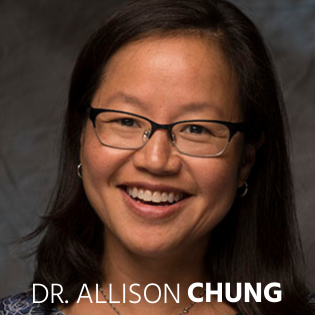
- Suspended: Grief and an unkept promise
-
I first met him in the middle of the pandemic. He is gaunt, older than his stated age, and has the collapsed jitteriness of a man beaten down by life. He has complex chronic pain and a history of substance use disorder. Most recently, he was diagnosed with recurrent lung cancer and lytic metastases to ribs and pelvis.
He is here because of pain. I do the usual, set up the ground rules, calculate morphine equivalents, and organize close follow-up.
He visits diligently. His only vices are cigarettes and hydromorphone. He is clean and sober. As his disease progresses, I finally have to prepare him for the end. Not surprisingly, his pain goes through the roof, and he starts to drink again.
He is weeping in agony. The pain is too much to bear. He tells me he would end it all, but he can’t.
“I am a believer, doc. Please promise me you would never let me choose euthanasia.”
I was not prepared for the intensity of this conversation.
He sees my hesitation, and he launches his full assault on my heart: He and his wife had gotten into a bad situation with an evil person, and things got ugly. He got away. His wife did not. His daughter blames him for his wife’s murder, and he has been estranged from his daughter ever since. This is how he became an addict.
“Please, doc, promise me. God let me live for a reason. Please don’t let me choose euthanasia. I need to make things right with my daughter,” he begs me.
In a moment of weakness, I relent.
By grace, there is a hospice bed, and he is admitted for pain control and end-of-life care. I thought he was close to the finish line but in an ironic twist of events, he improves, becomes belligerent, and demands to leave. He gets himself blackballed from hospice. I get a bed at tertiary psychiatry. He declines, leaves AMA, and shows up in ER in agony.
He goes to the ward for pain control. One day several months later, a courtesy fax informs me that he had chosen MAiD (Medical Assistance in Dying) and it was provided. My knees wobble and I sit down, my grief and an unkept promise both suspended in mid-air.
— Dr. Allison Chung
Thompson Region PCNs are here
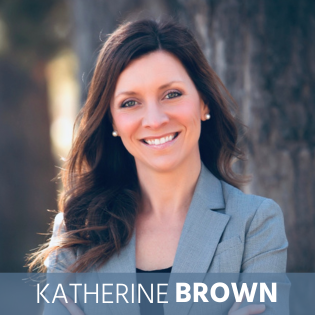
- A message from the Executive Director
-
After years of engagement and planning, I'm excited to confirm that the Thompson Region received approval for the service plan for our Primary Care Networks (PCN).
Thus begins our implementation of the two PCNs in our region. As of May this year, there are 79 PCNs in BC, with a target of 103 PCNs, according to the Ministry of Health. This has been many years in the works — it was 2018 when the ministry announced that Primary Care Networks would be implemented across the province.
What is a PCN?
Simplified, PCNs are intended to transform from a siloed primary care system into a network of providers with the purpose of meeting nine core attributes.
One analogy is the 'school district' model where any person who lives within the 'catchment' area of a PCN would have access to primary care, whether it be one provider or a team of providers. The recent rollout of the Provincial Attachment System helps the province, and local PCNs, understand which providers have capacity, who is looking for a provider and, hopefully, make a successful connection within a PCN.
How is this accomplished?
Separate funding is flowed through the Division of Family Practice and the Health Authority. The Division receives funding to hire PCN administration and change-management staff. The Health Authority receives funding for new clinical resources that can be deployed in a variety of ways determined by local and regional needs, while the PCN Steering Committee oversees this work.
What's next?
Two things are certain: 1) PCN represents the largest injection of funding of clinical resources in BC in decades, and 2) the process has been long and sometimes confusing. The Division is committed to demystifying PCN and clearly communicating where we are at and what it means for members throughout our collaborative PCN journey.
If you are interested in learning more about PCNs, please email us.
Email: thompsonregion@thompsondivision.ca— Katherine Brown, Executive Director
Resources:
After Hours Care Program provides longitudinal support
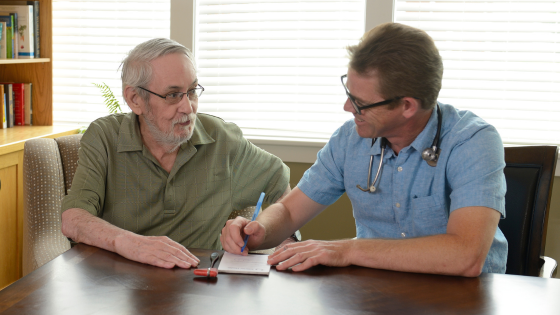
- In the Thompson Region, 21 physicians have signed up to staff the service
-
In the fall of 2023, the Thompson Region became one of five pilot communities to participate in the Family Practice Services Committee’s After Hours Care Program as a way to address urgent and semi-urgent issues for attached patients outside of clinic hours.
“Our region recognized the need for after-hours coverage,” says Sue Lissel, former Senior Network Lead at the Thompson Region Division of Family Practice. “Due to the recent closure of walk-in services in our community, most patients are directed to the urgent primary care center or emergency department on evenings and weekends. This program is designed to provide non-emergency care while satisfying the College of Physicians and Surgeons of BC requirements for 24/7 care for longitudinal patients.”
Dr. Andrew Wynne, who staffs the After Hours Care Program (AHCP), says some of the growing pains with the service have been related to appropriate triage and call volumes.
“This should get better when nursing triage is introduced to all calls on April 30, and more consistent information related to the service is made available to patients,” Dr. Wynne says.
Trained nurses triage patients and direct them to an emergency department or other appropriate services, so that only those who will benefit from a physician’s guidance after hours are connected to the physician on call.
“I have personally found it organized and supported,” says Dr. Wynne. “There is a Clinical Support Team member working with you throughout the shift. Compensation is fair, and shift preferences can be incorporated into your schedule as they fit.”
In March, the program was extended another six months and expanded to include Shuswap-North Okanagan with the original communities of Langley, South Okanagan Similkameen, South Island, Thompson Region, and Victoria. As of December 2023, approximately 70 per cent of family doctors and nurse practitioners in the participating communities had signed up to use the service, serving a combined population of 370,000 attached patients. This represents more than 90 family physicians.
“In the Thompson Region, 21 physicians have signed up to staff the service and 38 physicians and nurse practitioners are using it,” says Lissel. “These attached patients can now access physician care for urgent concerns after hours, while providers may notice a better work-life balance knowing their colleagues are available for their patients."
The service is available Monday to Friday from 5 p.m.to 9 a.m., and 24 hours on weekends and statutory holidays.
Dr. Wynne sees the potential benefits of the service as it develops.
“For primary providers, it can provide after-hours call coverage relief. Critical lab results get forwarded to the AHCP and a response sent to the patient. The program provides patients with easier access to physician advice while minimizing the potential burden on urgent care centers and emergency departments.”
Resources: To access materials to share with patients, go to the After Hours Care toolkit for family practices. https://fpscbc.ca/after-hours-care/using-the-service/toolkit.
Patient attachment transfers to local coordinator
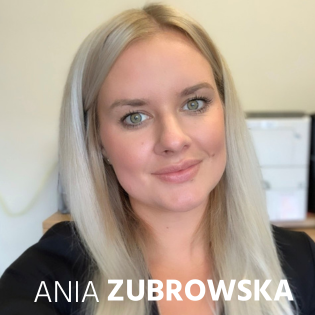
- Provincial oversight for patient attachment is shifting to local coordinators in communities across BC
-
For the past six years, HealthLink BC and the Ministry of Health have managed patient attachment in the Thompson Region as part of a pilot project for the Provincial Attachment System (PAS) and all Healthcare Registry work.
Now, all regional Health Connect Registry (HCR) attachment coordination duties are being transferred to the Thompson Region Division of Family Practice. This approach will allow the Division’s attachment coordinator, Ania Zubrowska, to work closely with local primary care providers to assess needs and capacity to build their patient panels.
The goal is to bring an end-to-end attachment approach to Interior Health primary care and private practices, and to contribute to streamlined patient attachment work across the province.
The first two clinics that have initiated this new end-to-end approach in the region include the Urgent Primary Care and Learning Centre and Dr. Abayomi Adetola. With Ania’s help, the two clinics are in the process of attaching approximately 100 patients from the HCR waitlist.
“As a user of the Provincial Attachment System, we are pleased to say, the PAS Program offers a seamless and user-friendly experience, ensuring patients can effortlessly connect with physicians ready to accept new patients,” Dr. Adetola says. “This streamlined process simplifies health care access, making it easier for individuals to find and secure the care they need without hassle. Thanks to Ania Zubrowska for helping all the way in navigating the program.”
Ania is also assisting the Long-term Care Initiative. As one of the LTC physicians prepares to move away from the region — and with the increased need to attach long-term care patients to a most responsible provider — the local attachment coordinator has collaborated with the LTC initiative project team to reach out to providers across the region. This work has helped identify several physicians who were willing to take on LTC patients.
To learn more about the recent changes to patient attachment and how the Division can support you, contact Ania.
Email: azubrowska@thompsondivision.ca
Building community — building connections

- We believe that connection is key to feeling part of a community
-
Connecting with peers is more than just professional, it's a great way to develop new friendships and find people who have common interests. It's hard to find balance in a busy life, but bursts of fun can sure ease stress and reinvigorate a sense of joy.
At the Division, our goal is to create a social environment that primary care providers in the Thompson Region want to be a part of. If we can create a strong social structure, then we believe that this is the foundation for not only retention but recruitment. We aim to create opportunities that offer something for everyone, and where everyone is welcome.
Over the past few months, we've enjoyed connecting with our members through Valentine's Day clinic pop-ins, St. Patrick's Day celebrations, and on Saturday, May 11, we had a great time at Walk With Your Doc at McArthur Island Park in Kamloops.
The Thompson Division is dynamic, and we look forward to offering places and spaces for professional and social connections that make the foundations of a strong and vibrant community that is welcoming to all, and attractive to those who are considering making us their new home.
As we more forward, we want to hear from you. How would you like to connect with colleagues? What types of educational sessions would be of interest? What can we do to help you and your colleagues foster new connections in our community?
Reach out and connect:
Shelley Sim, Community and Recruitment Coordinator
Email: ssim@thompsondivision.ca
Walk With Your Doc in Kamloops
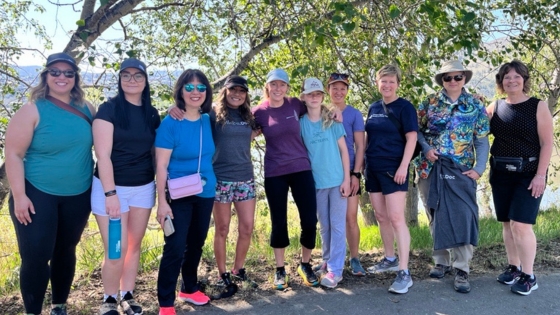
- Some of our Division members, family, staff, and partners were out enjoying the McArthur Island Park loop
-
It was a smaller group on May 11 for Walk With Your Doc in Kamloops, and we had a great time walking in the sunshine to promote exercise in the community. Thanks to all who came out.
Every year in May, doctors across BC host walking events in their communities to provide a fun and straightforward way for patients and community members to get moving and discuss the advantages of daily physical activity in a relaxed, social setting.
Walk With Your Doc is a public health initiative by Doctors of BC that encourages British Columbians to get active, fosters community connections, and demonstrates that BC doctors walk the talk.
Walk With Your Doc information booth
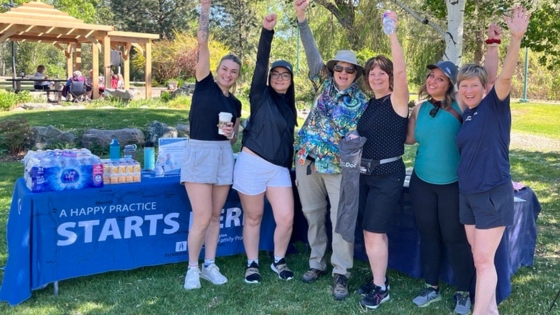
[Pictured, from left] Sara Becker, PSP Practice Improvement Coach; Chelsey McKinney, PSP Practice Improvement Coach; Dr Alina Cribb, family physician; Diane Jensen, medical office assistant; Chelsea Brookes, Division Member Integration Lead; Shelley Sim, Division Community and Recruitment Coordinator. A great day for a walk
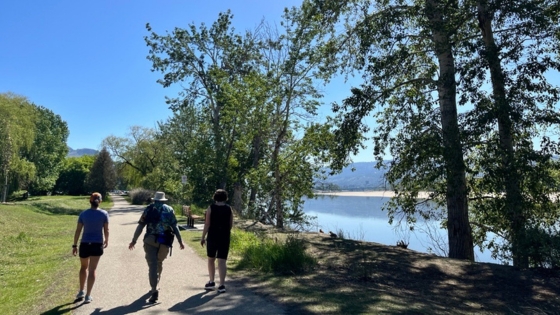
Walk With Your Doc at McArthur Island Park in Kamloops, 2024
You're reading the new, online-only version of Connexion
We changed the delivery model for the Connexion newsletter. We're going with a digital format, and no more printed copies. Share your thoughts with us: thompsonregion@thompsondivision.ca



